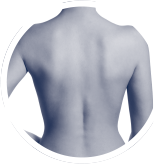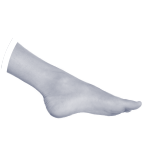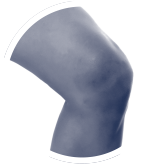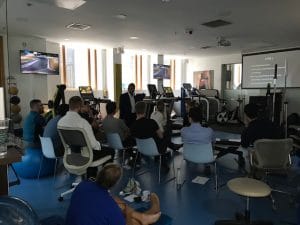
Introduction
Thumb base arthritis, also known as trapeziometacarpal arthritis, or thumb carpometacarpal (CMC) joint arthritis, is a common condition that affects the joint at the base of the thumb. It can cause significant pain and disability, impacting daily activities.
Anatomy of the Thumb Base Joint
The joint at the base of your thumb, which is called the trapeziometacarpal or thumb carpometacarpal joint, plays a major role in many daily activities, including gripping, pinching, and grasping movements. The joint connects your thumb to the wrist and is responsible for providing the wide range of motion of the thumb; this can make it more susceptible to wear and tear as we age, leading to a condition known as osteoarthritis (OA).
In this article our expert hand and wrist surgeon Mr Sam Gidwani gives us a detailed insight into thumb base joint replacement surgery; its indications, benefits, and an explanation of the procedure, as well as postoperative rehabilitation protocols, and surgical outcomes.
Causes and Symptoms of Thumb Base Osteoarthritis
Causes
Thumb base osteoarthritis occurs when the cartilage that cushions the ends of the bones in the CMC joint deteriorates. This leads to bone-on-bone contact, causing pain, inflammation and swelling, joint stiffness and loss of function.
Several factors contribute to the development of thumb base OA:
- Age: The risk of developing thumb base arthritis increases with age; it is more common in people over 50.
- Gender: Women are more likely to develop this condition than men.
- Genetics: A family history of arthritis can increase the likelihood of developing the condition.
- Injury or Trauma: Previous injuries to the thumb joint can predispose individuals to arthritis.
- Repetitive Motion: Activities or jobs (chefs, dress makers, musicians, labourers, mechanics etc), that involve repetitive thumb movements, can contribute to the wear and tear of the joint.
Symptoms
The symptoms of thumb base OA can vary in severity but typically include:
- Pain: Aching or sharp pain at the base of the thumb, especially during gripping or pinching activities.
- Swelling: Swelling and warmth around the joint due to inflammation.
- Stiffness: Reduced range of motion and difficulty moving the thumb.
- Weakness: Decreased strength in the thumb, making it challenging to perform tasks like opening jars or turning keys, which rely on forceful pinch.
- Crepitus: A grinding sensation when moving the thumb.
Thumb Base Joint Replacement Surgery
When conservative treatments (e.g., medications, injections, splinting, and physiotherapy) fail to provide good relief, thumb base joint replacement surgery, also known as CMC arthroplasty, may be a recommended option.
What does this surgery involve?
This involves removing the arthritic joint at the bottom of your thumb and replacing it with an artificial joint. There are different types of implants that can be used, but the most successful is a ball and socket implant that looks a bit like a hip replacement. It has a small stem that extends into the thumb bone and a cup that is implanted into the trapezium bone at the base of the thumb.
When is surgery required?
The ideal candidates for thumb joint replacement are individuals experiencing arthritis at the base of the thumb, who are wanting to regain enhanced functionality beyond what more traditional surgical interventions for thumb arthritis (such as a Trapeziectomy) can offer.
This operation is performed to relieve pain in the arthritic joint and improve your thumb and hand function. Surgeons will always encourage you to try conservative options like painkillers, steroid injections, splints, physiotherapy and activity modification before considering surgery. The majority of patients with thumb base arthritis can manage their symptoms in this way without ever needing an operation.
What are the benefits of thumb joint replacement surgery?
If surgical treatment is required, thumb joint replacement surgery offers specific benefits over more traditional methods, including:
- Shorter recovery time
- Reduced post-operative pain
- Better thumb pinch strength and therefore hand function
All surgery comes with its risks and trade-offs. This form of joint replacement surgery comes with a risk of dislocation (3-4%) and gradual loosening over time. You will be given all the information you need to make an informed choice.
The main concern with thumb joint replacements is that it is a relatively new procedure compared to replacements of larger joints like the hip, and the technology of the implants is evolving. While there is some excellent literature and studies being carried out that suggests these replacements have demonstrated very good durability, longevity of the implants beyond 10 years is not yet fully known.
What happens during thumb base joint replacement surgery?
The procedure is almost always done as a day case, and usually takes about 60 to 80 minutes.
- Anaesthesia: The patient is administered either general anaesthesia or regional anaesthesia to numb the hand and wrist.
- Incision: A small incision (approx 3 cms) is made over the base of the thumb to access the CMC joint.
- Implant Placement: The thumb joint replacement stem is placed into the metacarpal bone of the thumb. A small hemispherical socket is created in the trapezium bone, and a cup is impacted into that socket. The ball of the implant sits within this cup.
- Closure: The incision is closed with sutures, and a plaster splint is applied to immobilise the thumb.
- Post Surgery: You will be given local anaesthetic to give you some pain relief, and your thumb will be bandaged and/or put into a plaster splint to allow your wound to heal. You will need a consultation with your surgeon to review your surgery about 14 days following your operation, and will l be referred for some physiotherapy with a specialist in hand therapy.
What is the recovery process after thumb joint replacement surgery?
The recovery process following thumb base replacement surgery is usually straightforward and manageable. At around two weeks post op, your dressing will be removed and for most individuals they can slowly resume light daily activities such as washing, dressing, writing, typing, using kitchen utensils etc, as their pain settles. You will be given a splint to wear for another 4 weeks to allow for a period of immobilisation.
It’s advised that patients remain cautious for the initial six weeks following surgery; gradually increasing more strenuous activity from the sixth week onward. Heavy lifting should be avoided until approximately ten to twelve weeks post-surgery.
Surgical Outcomes of Thumb Base Joint Replacement Surgery
Thumb base joint replacement surgery has a high success rate, with most patients experiencing significant pain relief and improved function. Some of the expected outcomes include:
- Pain Reduction: Most patients report a substantial decrease in pain, allowing them to resume daily activities comfortably.
- Improved Function: Increased range of motion and strength in the thumb joint, enabling better grip and pinch activities.
- High Satisfaction Rates: Patients typically express high levels of satisfaction with the surgical outcomes, with many returning to their normal activities within a few months.
What are the alternatives to this surgery?
Surgery should only be considered as a last resort, when other interventions have failed. The initial approach to managing thumb base arthritis should be through activity modification, hand therapy, splints, steroid injection and other analgesics.
Unfortunately, as OA is a degenerative condition, it can often deteriorate over time and eventually a percentage of patients will require surgery.
As well as joint replacement surgery, another option for patients is a procedure called a Trapeziectomy. This involves the removal of the bone at the base of the thumb (trapezium) to stop the bones in the thumb joint rubbing together and causing pain. This has previously been the gold standard treatment option. However the recovery process can be lengthy, and while it alleviates the pain, it can leave the individual with reduced thumb strength.
Another option is a joint fusion, which involves permanently immobilising the joint. Again this helps significantly with pain, but it can cause functional limitations. It is generally used in very young patients who have developed osteoarthritis as a result of a joint injury or fracture.
Mr. Sam Gidwani at London Bridge Orthopaedics
Sam Gidwani is a Consultant Hand and Wrist Surgeon at Guy’s & St.Thomas’ Hospitals, and works privately at London Bridge Orthopaedics.
‘An outstanding surgeon who listened to my concerns and turned things around with incredible efficiency. I was in awe watching the skill in theatre and Mr Gidwani was a talent in making me feel at ease throughout surgery, while also having a great sense of humour whilst remaining professional with staff and patient. I look back on my time in theatre as an amazing experience and it was all down to Mr Gidwani. I cannot thank him enough.’
Conclusion
Thumb base arthritis can significantly impact quality of life, but thumb base joint replacement surgery offers a viable solution for those who do not find relief with conservative treatments. Understanding the causes, symptoms, surgical procedure, and post-operative rehabilitation protocols is essential for achieving the best outcomes.
With the expertise of surgeons like Mr. Sam Gidwani at London Bridge Orthopaedics, patients can look forward to improved function and reduced pain, enabling them to return to their daily activities with confidence.









